Selecting the appropriate needle for an embroidery project is essential for achieving precise and beautiful results, especially when working with multiple strands of floss.
The question of “Which Embroidery Needle for Six Strands of Floss” is a critical consideration that can significantly impact the outcome of your stitching endeavors.
The choice of needle depends on various factors, including the fabric type, the intricacy of the design, and the desired stitch thickness.
In this exploration, we delve into the characteristics of needles suitable for handling six strands of embroidery floss, offering insights into the diverse options available for enthusiasts seeking optimal results in their needlework.
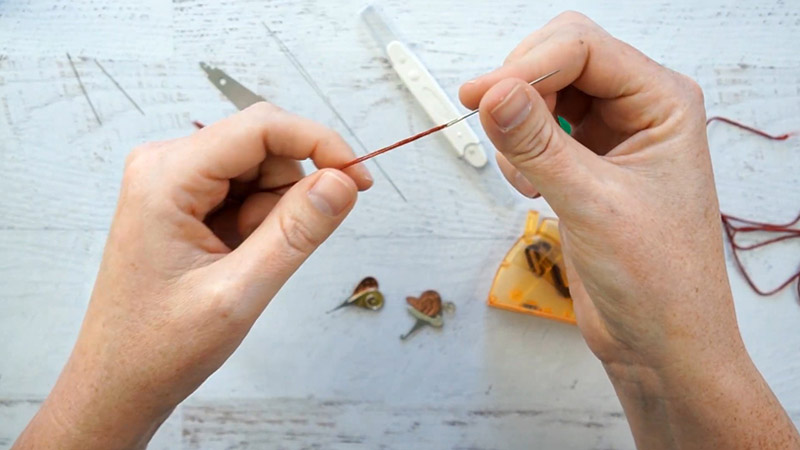
What Does 6 Strands Mean In Embroidery?
In embroidery, the term “6 strands” refers to the number of individual threads that make up a floss or embroidery thread. Embroidery floss typically consists of multiple strands twisted together, and the number of strands can vary.
When a thread is labeled as “6 strands,” it means that the floss is composed of six separate threads that can be separated and used individually for stitching.
This versatility allows embroiderers to adjust the thickness of their stitches based on the desired effect and the type of fabric being used.
When working with embroidery floss, crafters can choose to use all six strands for bold and prominent stitches or separate them into fewer strands for more delicate and intricate detailing.
Embroidery 2 strands meaning is also relevant, where using only two strands instead of the full six offers finer and more subtle results, providing additional flexibility and control in the embroidery process.
This flexibility in strand separation is a key feature contributing to the artistry and intricacy achievable in embroidery projects.
What Size Needle For 6 Strand Embroidery?
Embroidery needles are crucial in achieving precision and ease in embroidery projects. The embroidery needle size is determined by a numbering system, with smaller numbers indicating larger needles.
Selecting the right needle size ensures smooth stitching when working with six strands of embroidery floss. Here are five types of embroidery needles suitable for six strands:
Crewel Needle (Size 1-3)
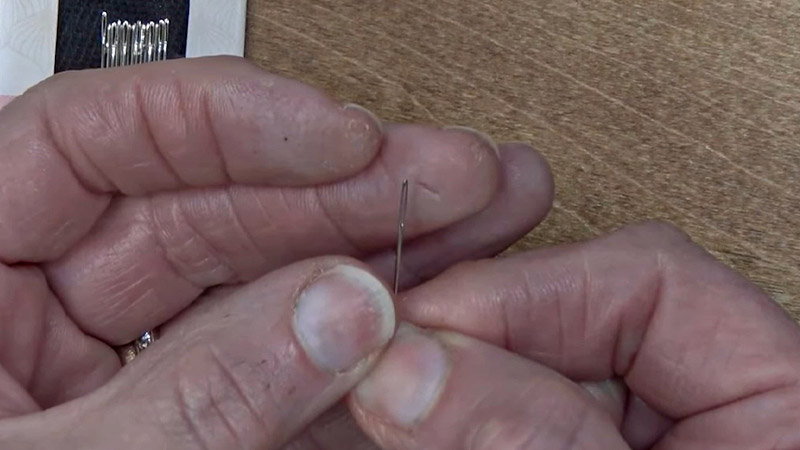
Crewel needles feature a long, slender body with a sharp point, making them ideal for effortlessly passing through various fabric types. With a larger eye, they accommodate multiple strands of floss, making them suitable for projects involving six strands.
Tapestry Needle (Size 22-26)
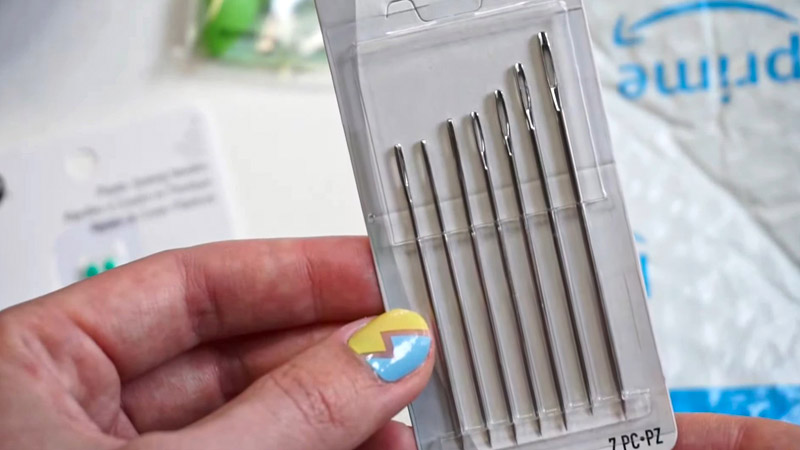
Tapestry needles are characterized by their blunt points and large eyes, facilitating easy threading of multiple strands.
These needles are suitable for counted cross-stitch and embroidery on loosely woven fabrics, allowing six strands to pass through without causing damage.
Chenille Needle (Size 18-24)
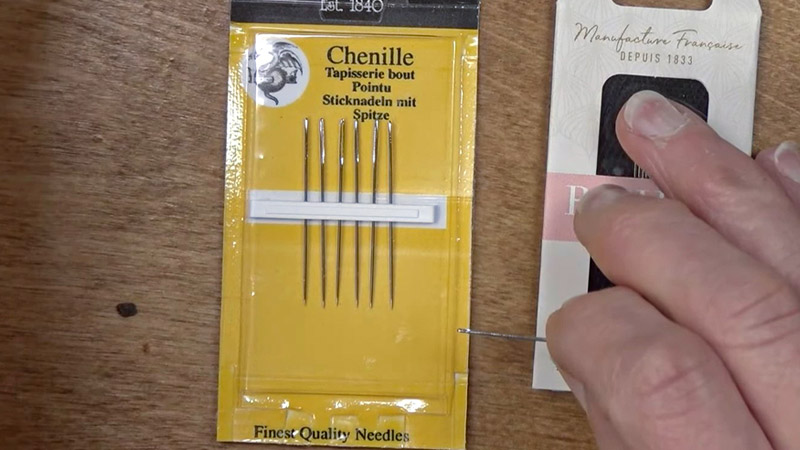
Chenille needles have a sharp point and a large eye, providing a balance between precision and the ability to accommodate six strands. They work well on heavyweight fabrics and are suitable for creating bold, textured stitches.
Milliners Needle (Size 3-9)
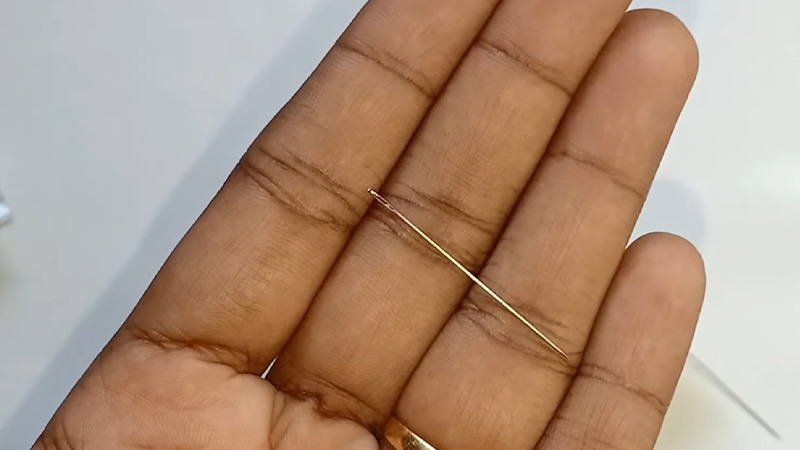
Milliner or straw needles feature a long shaft and a small, round eye. They are versatile, allowing for the use of 6 strands, and are particularly useful for creating intricate embroidery details and decorative stitches.
Embroidery Needles (Size 3-9)
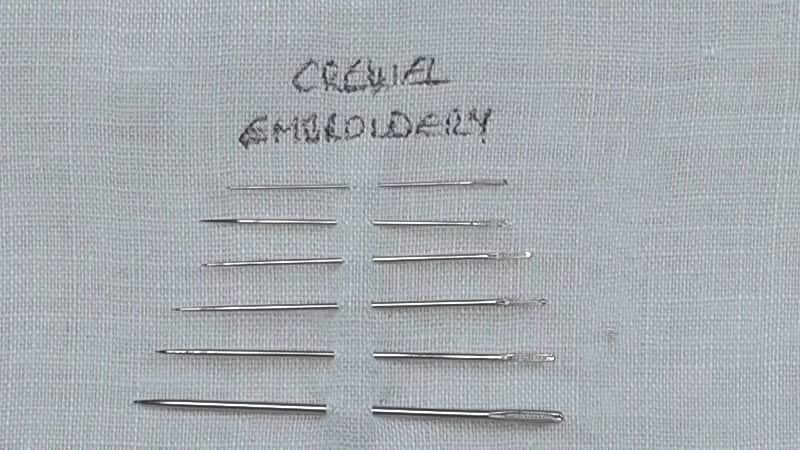
Specifically designed for embroidery work, these needles have a sharp point and a medium-sized eye. They are well-suited for projects involving six strands, providing a good balance between ease of stitching and precise detailing.
When determining the embroidery needle for six strands, it’s essential to consider the fabric type and project requirements for optimal results. Experimenting with different needle sizes can help find the perfect match for achieving the desired embroidery effect.
How To Thread An Embroidery Needle?
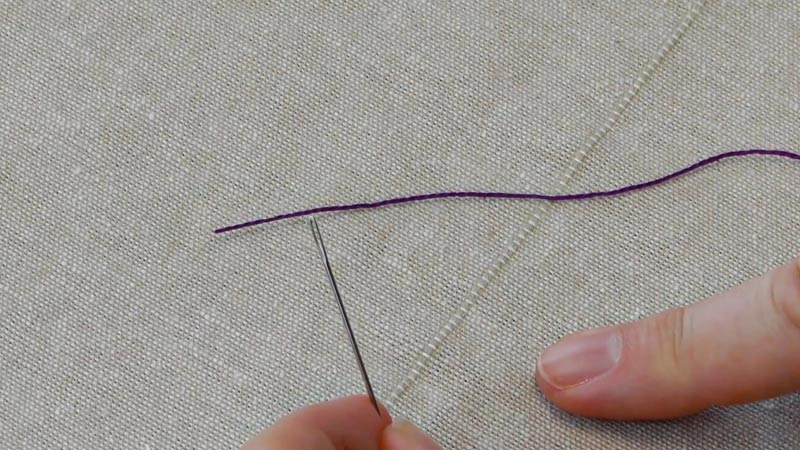
Threading an embroidery needle efficiently is a fundamental skill for any embroidery enthusiast, particularly when working with embroidery six strands. Here are five simple methods to guide you through the process:
Single Strand Method
To thread a single strand, separate one thread from the bundle. Hold the end between your fingers and moisten it slightly. Insert the moistened end through the eye of the embroidery needle, making it easier to pass through the small opening.
Twist and Insert Method
Bundle all six strands together and twist them gently between your fingers to create a unified thread. Moisten the end slightly and insert it through the needle’s eye. Twisting the strands helps them align and pass through the eye smoothly.
Needle Threader Tool
Utilize a needle threader for added convenience. Insert the threader’s wire loop through the embroidery needle’s eye. Place the embroidery floss through the threader’s loop and pull it back through the needle eye, leaving a tail for stitching.
Thread Conditioning
Apply a small amount of beeswax or thread conditioner to the end of the embroidery floss. This helps prevent fraying and makes the strands more manageable.
Once conditioned, thread the treated end through the needle, ensuring a smoother threading process.
Flat Thread Method
Flatten the end of the embroidery floss by rolling it gently between your fingers. This flattening technique makes inserting the threads through the needle’s eye easier.
Once flat, thread the prepared end through the eye for a streamlined stitching experience.
Mastering these techniques ensures a frustration-free experience when threading an embroidery needle with six strands, allowing you to focus on the creative and enjoyable aspects of your embroidery projects.
FAQs
Can any needle be used for six strands of embroidery floss?
Not all needles are ideal. Needles like crewel, tapestry, chenille, milliners, or dedicated embroidery needles are better suited, each offering unique advantages for handling six strands effectively.
How do I thread an embroidery needle with six strands?
Separate the strands and use single strands, twist and insert, needle threader, thread conditioning, or flat thread method for efficient threading.
Are there specific needles with six strands for different fabric types?
Yes, consider fabric weight and weave. Chenille or crewel needles may be suitable for heavier fabrics, while tapestry needles work well on looser weaves.
Can needle size affect the embroidery project’s final look with six strands?
Absolutely. Smaller needles produce finer details, while larger ones create bolder stitches. It’s crucial to match the needle size with your desired embroidery outcome.
How can a needle threader aid in handling six strands of floss?
Needle threaders simplify threading by guiding the embroidery floss through the needle’s eye, which is especially helpful when dealing with multiple strands, saving time and reducing frustration.
Conclusion
In the intricate embroidery world, choosing the right needle is pivotal, particularly when dealing with six strands of floss.
Whether opting for a crewel needle, tapestry needle, chenille needle, milliner needle, or dedicated embroidery needle, each type brings its unique attributes to the stitching process.
The journey of discovering “Which Embroidery Needle for Six Strands of Floss” unveils a range of options, empowering embroidery enthusiasts to tailor their choices based on project intricacy and fabric selection.
As crafters embark on their creative endeavors, the right needle becomes a crucial tool, ensuring both ease in threading and precision in translating imaginative designs onto fabric.
The art of embroidery truly comes alive when complemented by the thoughtful selection of the perfect needle for the task at hand.
Leave a Reply